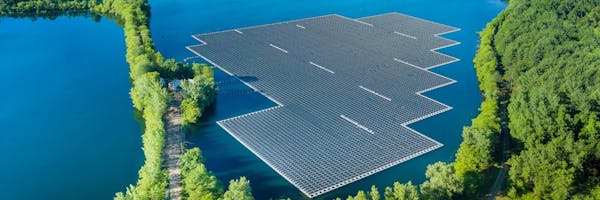Floating Solar Farms: The Future of Renewable Energy on Water

Floating solar farms are a game-changer in renewable energy. These innovative systems, also called floatovoltaics, place solar panels on water instead of land, maximizing efficiency and saving space. Floating solar power is emerging as a top solution for sustainable energy production, especially in areas with limited land availability.
Let’s dive into what floating solar farms are, how they work, and why they’re the future of clean energy.
What Are Floating Solar Farms?
Floating solar farms are photovoltaic systems mounted on floating platforms over water bodies like reservoirs, lakes, or ponds. They generate solar energy while avoiding the need for land-based installations, making them ideal for regions where land is scarce or expensive.
Benefits of Floating Solar Farms
- Efficient Use of Space
Floating solar farms utilize unused water surfaces, offering a land-free solar energy solution. This is perfect for urban areas or agricultural regions where land competition is high. - Improved Solar Panel Efficiency
The cooling effect of water helps panels perform better by reducing overheating, resulting in higher energy output compared to traditional solar farms. - Water Conservation
By covering water surfaces, floating solar systems reduce evaporation from reservoirs, a crucial benefit in water-scarce regions. - Eco-Friendly Power Generation
Floating solar minimizes environmental disruption compared to land-based solar farms, preserving ecosystems when implemented responsibly.
Real-World Examples of Floating Solar Farms
- China's Huainan Solar Farm: Built on a former coal mine, this floating solar plant generates enough power for thousands of households.
- Japan’s Yamakura Dam: One of the largest floating solar projects, powering Tokyo’s metropolitan area.
- India’s Floating Solar Push: With its ambitious renewable energy goals, India is investing in floating solar installations across its reservoirs.
Challenges of Floating Solar Systems
While promising, floating solar farms face challenges:
- High Initial Investment: Installing and anchoring floating solar panels costs more than land-based systems.
- Environmental Concerns: Poorly planned systems can affect aquatic ecosystems or water quality.
- Maintenance Issues: Operating in water introduces challenges like corrosion and algae growth.
Future of Floating Solar Farms
The market for floating solar technology is booming, with countries worldwide embracing these solutions for sustainable energy generation. Innovations in materials and design are reducing costs, making them viable for large-scale energy production in oceans, canals, and reservoirs.
Conclusion
Floating solar farms are a smart solution for renewable energy production. They optimize space, improve efficiency, and support sustainable energy goals without competing for land. As the world moves toward green energy solutions, floating solar farms are proving their worth as a cornerstone of the clean energy future.
